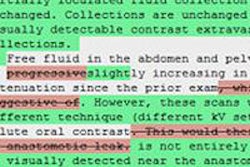Implementing automated growth-monitoring algorithms for electronic health records (EHRs) can help detect more growth disorders in children, Finnish researchers reported in the Journal of the American Medical Association.
In a research letter published in the September 11 edition of JAMA, Dr. Ulla Sankilampi, PhD, from Kuopio University Hospital, and colleagues shared how incorporating a novel computerized and automated growth-monitoring strategy into an EHR system led to a significant increase in growth-disorder detection. The automated methods included analysis of growth data and referral of abnormal data for review, in addition to standard growth monitoring.
After integrating the strategy into an EHR system in the primary care setting, the authors compared its effectiveness in 2008-2009 with standard growth-monitoring methods used in the preceding three years (JAMA, September 11, 2013, Vol. 310:10, pp. 1071-1072).
In the control years (2005-2008), 33,029 children were screened annually, on average, with an average of four children diagnosed with a new growth disorder. In the year after automated growth monitoring was implemented, there were 28 new diagnoses among the 32,404 children screened.
The rate of growth-disorder diagnoses was as follows:
- Standard growth monitoring: 0.1 per 1,000 screened children
- Automated growth monitoring: 0.9 per 1,000 screened children
"In this population-based cohort study, we showed that screening of growth disorders using algorithms integrated into an EHR system was associated with a higher rate of detection and referral to specialist care," the authors wrote. "Whether the results are generalizable to other countries remains to be determined."


















